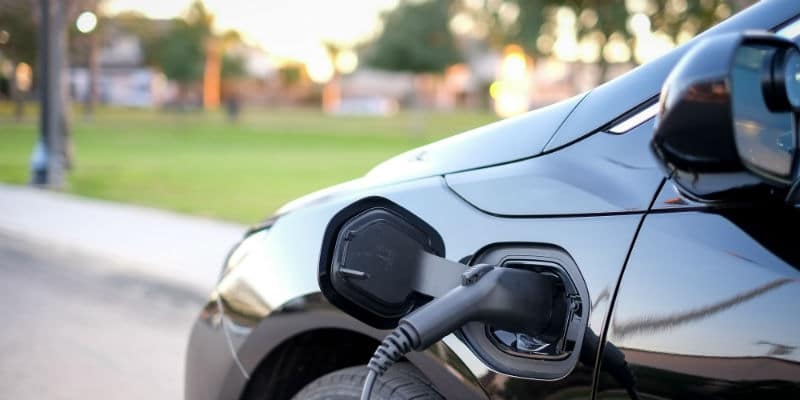In order to comply with stringent fuel economy and emission standards, automakers are adding electric vehicles to their lineup. However, consumer adoption has not been swift: globally, electric cars on the road account for a mere 0.2% of the total number of passenger vehicles in circulation. Let’s focus our attention on battery-electric vehicles, which we will refer to as EVs. How can we accelerate their adoption?
One of the oft-cited reasons for why buyers have been so reluctant to purchase EVs is range anxiety–a fear that EVs will run out of charge while on the go. In order to address this issue, automakers are engaged in an arms race to increase battery range. However, improving a car’s range by increasing battery capacity comes with its own set of challenges. Longer range comes at the expense of increased price, which inevitably prevents some would-be buyers from making a purchase.
While battery manufacturers and automakers roll out improvements, there is another way to address range anxiety, and spur EV adoption: build more EV charging stations. Already, automakers, utility providers, charging network providers and other key stakeholders are working towards this end.
How can we seamlessly weave EV charging into the fabric of our daily lives?
For many, the conventional, five to ten minute process of refueling is relatively convenient. However for EVs, at present, a five to ten minute window to recover 200+ miles of range is not feasible. Furthermore, while the U.S. boasts approximately 112,000 gasoline stations, it only has around 16,000 public EV charging stations lining the streets. Of those, fewer than 2,000 are fast-charging stations, making most charging sessions several hours long in order to recover substantial range (and even as many as 30 hours long, in some cases). Unfortunately, a drastic reduction in charging time is challenging due to various factors such as capacity of electric grid infrastructure, and limited battery design. So what can be done?
While building more charging stations is key to accelerating EV adoption, simply trying to replicate the gasoline-fueling experience is the wrong way to go. Instead, key stakeholders should consider the experience from the perspective of the consumer. Jobs Theory can help with that.
Jobs Theory explains that people don’t simply buy products or services; they pull them into their lives to make progress. We call this progress the “job” they are trying to get done, and understanding this opens a world of innovation possibilities.
For example, one way to reduce range anxiety and mitigate the inconvenience of charging is to enable consumers to charge their EVs as they work towards addressing the jobs that occur in their daily lives. For example, some of us may have the job of “help me de-stress by hitting the gym.” So, building a charging station where we’re already trying to address this job makes for a highly convenient and reinforcing experience.
Since cars are parked 95% of the time on average (at least among owners not using their cars in the sharing economy), there are plenty of other opportunities to identify jobs that happen to coincide with times cars are parked, and thus able to be charged. Some examples of potential jobs-based stations are at workplaces (workplace charging increases the likelihood of EV usage by as much as six times), at the mall, outside movie theaters, nearby restaurants, and most obviously, at single-family homes and multi-unit dwellings (where most plug-in electric vehicle drivers already do more than 80% of their charging).
Because these stations exist at locations where cars are generally parked for extended periods of time, they won’t need to be fast-charging. However, fast-charging stations will be required at strategic locations such as highways in order to alleviate the anxiety while travelling on a long-distance trip. They will also be required at conveniently located areas around town in order to provide the option to refuel quickly. Fortunately, key stakeholders have already started installing such jobs-based stations. Now, they need to hit the gas (or EV pedal!) harder, while simultaneously addressing the other challenges associated with EV charging.
Do you own an EV? If so, how important was the availability of EV charging station in your purchase decision? Where do you plug in?



